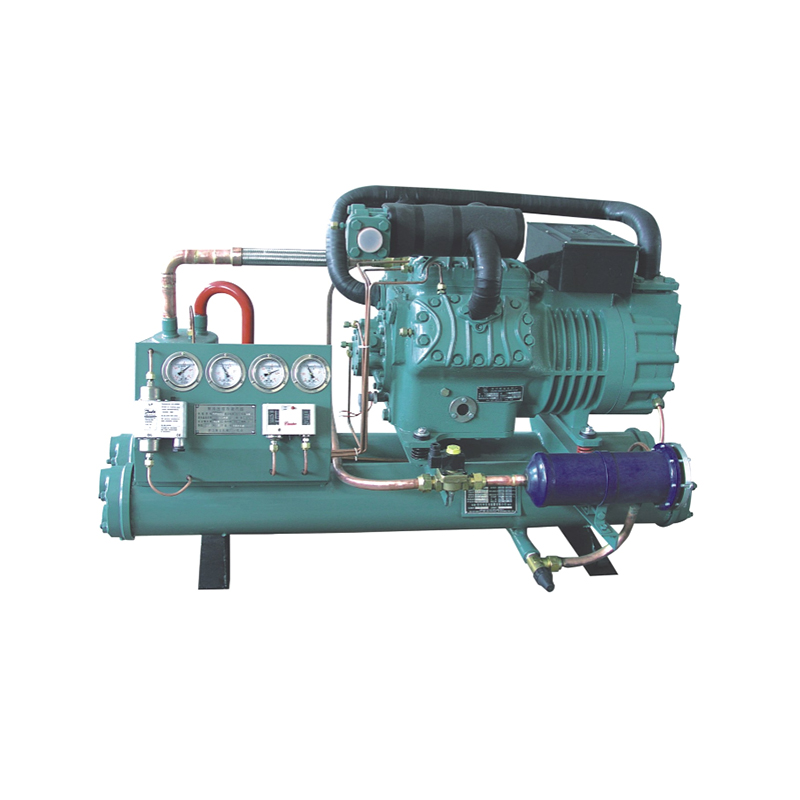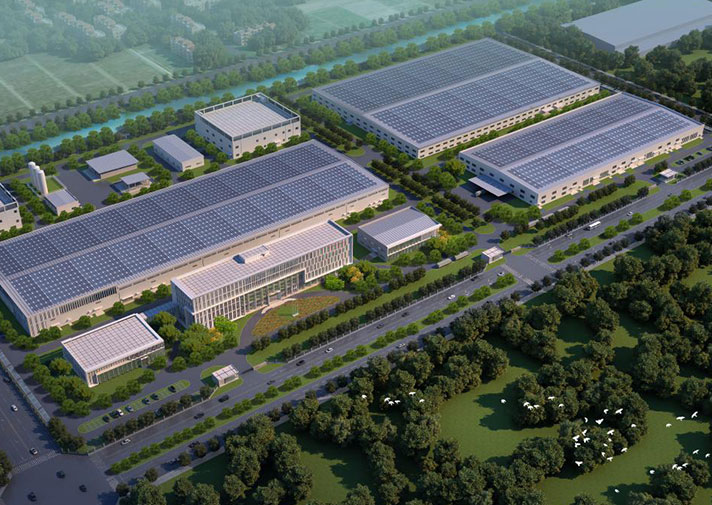In addition to compressor technology, what optimization measures are taken in the system design of the entire unit to reduce energy consumption?
Optimization of cooling water circulation system
The cooling water circulation system is an indispensable part of the water-cooler condensing unit, and its reasonable design directly affects the heat dissipation efficiency and energy consumption level of the unit. In order to reduce energy consumption, the unit usually adopts a large temperature difference design, that is, increasing the temperature difference between the inlet and outlet of the cooling water to reduce the flow of cooling water and the power consumption of the circulation pump. In addition, optimizing the layout of cooling water pipes, reducing water flow resistance and increasing water flow speed can also significantly improve cooling efficiency. At the same time, the use of efficient cooling towers and closed cooling water systems can further reduce water evaporation and drift losses, and reduce supplementary water volume and operating costs.
Innovation and improvement of heat exchangers
The heat exchanger is a key component for heat exchange in a water-cooler condensing unit, and its performance directly affects the cooling effect and energy consumption of the unit. In order to improve heat exchange efficiency, units usually use high-efficiency heat exchangers, such as plate heat exchangers, spiral heat exchangers, etc. These heat exchangers have the advantages of large heat exchange area, small thermal resistance, and high heat transfer efficiency. In addition, by optimizing the structure and materials of the heat exchanger, such as using materials with corrosion resistance and good thermal conductivity, and increasing the surface roughness of the heat exchanger to enhance heat transfer, the cooling capacity of the unit can be effectively improved and energy consumption reduced.
Application of intelligent control system
Intelligent control systems are increasingly used in water-cooled units. By installing sensors, data collectors and other equipment, the operating status and environmental parameters of the unit, such as temperature, pressure, flow, etc., can be monitored in real time. The intelligent control system can automatically adjust the operating parameters of the unit, such as compressor speed, cooling water, etc. based on these data. flow, etc., to achieve optimal operating status and lowest energy consumption. In addition, the intelligent control system can also conduct fault diagnosis and early warning for the unit, discover and solve potential problems in advance, and avoid increased energy consumption and losses caused by fault expansion.
Refrigerant selection and charge optimization
Refrigerant is an important component of a water-cooled unit, and its performance has a direct impact on the cooling effect and energy consumption of the unit. In order to reduce energy consumption, units usually use high-efficiency, environmentally friendly refrigerants, such as R404A, R410A and other new refrigerants. These refrigerants have the advantages of high refrigeration efficiency and environmental friendliness, and can significantly improve the cooling capacity of the unit and reduce energy consumption. At the same time, reasonable control of the refrigerant charge is also one of the key measures to reduce energy consumption. Too much or too little refrigerant will cause the unit's operating efficiency to decrease and energy consumption to increase. Therefore, during the design and operation of the unit, the refrigerant charge needs to be accurately calculated based on the actual situation, and checked and adjusted regularly.
Waste heat recovery and comprehensive utilization
water-cooler condensing units will generate a large amount of waste heat during operation. If this waste heat can be properly utilized, it can not only reduce the energy consumption of the unit, but also bring additional economic benefits to the enterprise. Therefore, when designing the unit system, you can consider adding a waste heat recovery system to use the waste heat generated by the unit for preheating boiler feed water, heating domestic water, heating and other occasions. Through waste heat recovery and comprehensive utilization, the energy utilization efficiency of the unit can be significantly improved and the operating costs of the enterprise can be reduced.


